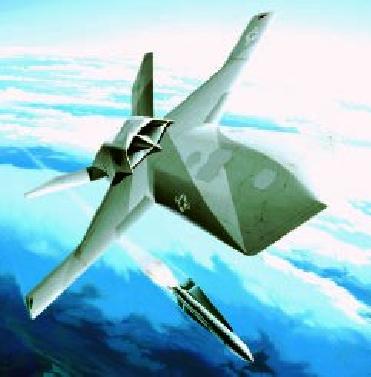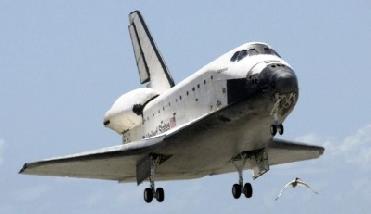
A graphical representation of an UCAV concept.
Mission accomplishment is an utmost challenge for the armed forces of any country. New hi-tech technologies have come ahead to give country's defence forces flexibility and freedom to showcase their military capabilities. Air superiority has been the goal of any defence forces since fighter aircraft were invented. Unmanned Combat Aerial Vehicle is a true fighter in this regard.
Unmanned Combat Aerial Vehicle (UCAV) unlike ordinary UAV's are designed to deliver weopons. They are an effective alternative to manned air-superiority fighters. The UCAV conception of an aircraft without an on-board human pilot is definitely unique and mature. The weapons system installed in the aircraft are generally conventional armaments. It is also designed to carry micro-munitions, Directed Energy Weapons and weapons for air-to-air dogfight thus providing noteworthy operational benefits.
The present concept is modelled such that the aircraft will be programmed with route and target inputs to operate autonomously. UCAV consists of three basic systems: air vehicle, ground control and payload.
The air vehicle, comprising of airframe, propulsion, and flight controls, allows the aircraft to fly. The ground control unit administers the mission. The operator corressponds with the UCAV through a radio frequency data link. Weapons and on-board sensors collects information and deliver it in real time to the control station. And finally, the payload comprising of weapons and sensors represents the competence of the UCAV to complete the mission.
UCAV offers new design patterns thus giving the aircraft freedom of action and strategic flexibility. These potential fighters having three essential design conditions which are stealth, maneuverability, and cost. The unit cost of an UCAV is one-third less than unit cost the Joint Strike Fighter, and reduction in total life cycle is 50-80% compared to a current tactical aircraft squadron. With the exception of human pilot a number of cost and weight penalties, and man-rating requirements associate with it will also be minimal.
The major advantage of an UCAV over an manned aircraft is their greater endurance to perform long range missions even in risky environments. Removal of pilot in UCAV will also eleminate the risk of loss to aircrew.
The advantages and capabilities of UCAVs are profuse. Therefore, UCAV development presents higher opportunities to the guided weapons industry. It is well predicted by militark think tanks that in future UCAVs will become an increasingly important component of the air power of the world’s leading nations.
Current UCAV concepts include:
- J-UCAS - A joint DARPA/ USAF/ USN programme: Boeing X-45 and Northrop-Grumman X-47 Pegasus
- Hunter-Killer Project
- Dassault Neuron
- Saab SHARC
- Saab Filur
- EADS UCAV
- Denel Aerospace Systems: UCAV-TD
- Israel Aircraft Industries Eitan
The Defence Research and Development Organisation of India is also planning to develop an Unmanned Combat Aerial Vehicle (UCAV). The UCAV will be produced as part of a plan to develop defence weapon systems.
- Courtesy:
Global Security
Economic Expert Website
 Previous Article
Previous Article Next Article
Next Article













The Indian Air Force, in its flight trials evaluation report submitted before the Defence Ministry l..
view articleAn insight into the Medium Multi-Role Combat Aircraft competition...
view articleSky enthusiasts can now spot the International Space Station (ISS) commanded by Indian-American astr..
view article